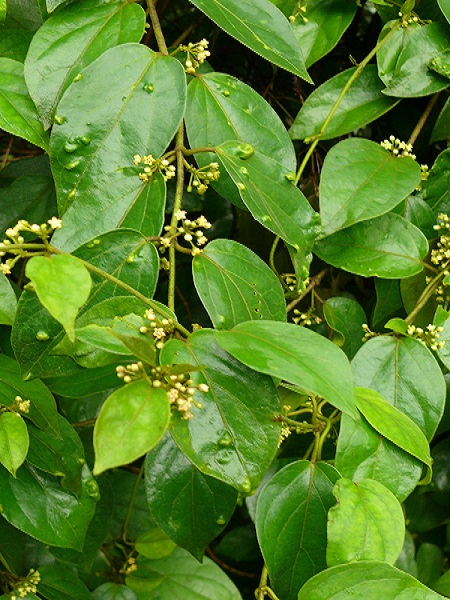
| Family | Asclepiadaceae |
| English Name | Gudmar (madhunashini) |
| Malayalam Name | Cakkarakkolli, madhunasini |
| Tamil Name | Sarkkaraikolli, amudupushpa |
| Kannada Name | Kadhasige, madhunaashini, sanna garase humbu |
| Telugu Name | Poda patri, puttapodra |
| Hindi Name | chhota-dudhilata, gudmar, gurmar |
| Sanskrit Name | madhunasini, sarpadanshtrika, ajaballi |
| Trade Name | Gudmar (madhunashini) |
| Part Used | Leaves |
| In Wild | Yes |
| Under Cultivation | Yes |
| Temperature | NA |
| Rainfall | NA |
| Farmers | NA |
| Traders | NA |
| Institution | NA |
| Individually | NA |
| State/Region | NA |
| District | NA |
| Nursery Information | NA |
| Yield | About 1250 Kg of dry leaves can be obtained per hectare once in three months |
| Economic of cultivation | NA |
| Quantitative quality standards | • Foreign matter: not more than 2.0 per cent • Total ash: not more than 11.0 per cent • Acid-insoluble ash: not more than 2.0 per cent • Ethanol-soluble extractive: not less than 20.0 per cent • Water-soluble extractive: not less than 29.0 per cent • Loss on drying: not more than 7.0 per cent |
| Description | NA |
| Agro technology/Cultivation practices | 1. Planting-stock production: 1.1 Production by seeds: Seed setting is poor in this species and the seeds show a maximum germination percentage of 50%–55% when sown in soil mixed with vermicompost. Seed germination is poor. 1.2 Production by stem cuttings: Terminal and axillary cuttings with three to four nodes from one-year-old plants are the best planting material. The matured stem cuttings of 15 cm length are treated with 500ppm IBA for about 18 hours. Then they are planted in the polythene bags containing equal proportions of soil, sand and well rotten FYM. Before planting in the polythene bags the cuttings are also treated with 1% Bavistin and have to be watered every day. Roots develop after ninety days and then are ready for transplantation. 2. Raising propagules: Polybags are filled with soil, sand, and FYM (farmyard manure) in 1:2:1 ratio and terminal or axillary cuttings are planted in them. Vermicompost may be used in place of FYM. The cuttings are placed under humid conditions in shade houses or mist chambers for development of roots. Rooting is initiated within a month of planting. 3. Field planting: Rainy season is the best period for transplanting the rooted plants in the field. An optimum spacing of 1 x 1.5 m is recommended for a crop stand of about 6700 plants per hectare. The rooted cuttings/seedlings may be planted in crowbar holes. When the plants are young, green gram can be grown as an intercrop. Alternatively, the crop can be raised beneath the tree species that serve as host or staking for this twiner. 4. Manuring/ fertilizer: About 10–12 tonnes/hectare of FYM is applied as basal dose at the time of land preparation. An additional equal dose may be added every year for maximizing biomass production. 5. Irrigation: Irrigation is required at least once a week during summer season. The frequency may also depend on the soil moisture in winter. It may be limited to one per month. 6. Diseases/pests: An aphid (Aphis sp.) is observed to attack the apical tender parts of the plant during the rainy season. However, if the damage is not severe, no control measures are required. Use of chemical pesticides should be avoided since leaves are to be regularly plucked for harvest. |
| Harversting | Leaves that are about 30–40 days old can be plucked for use at every three months. However, the better yield is obtained after one year of growth. |
| Processing | Leaves are dried in shade and are packed in polythene bags. The moisture content of the dry leaves should be less than 8% to prevent deterioration |
| References | NA |
